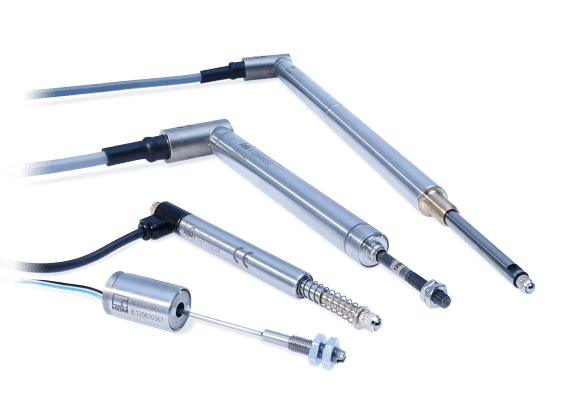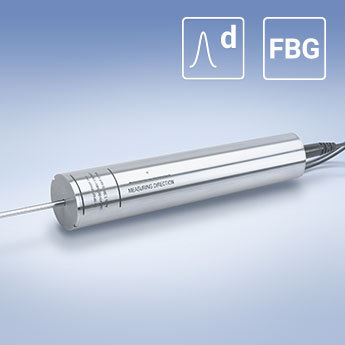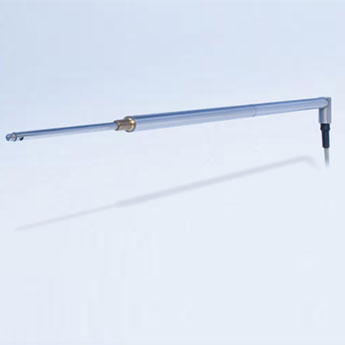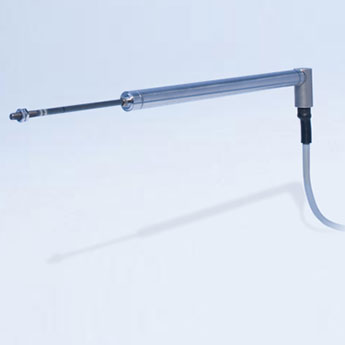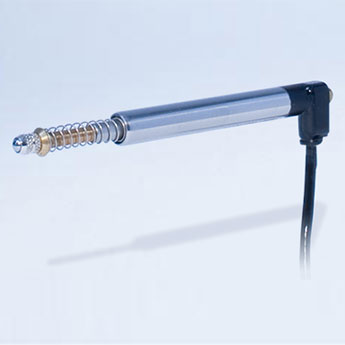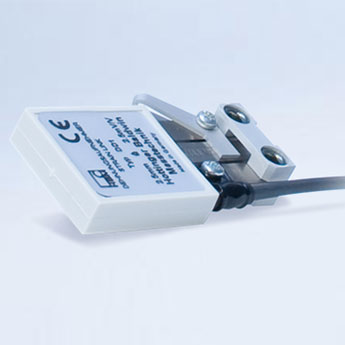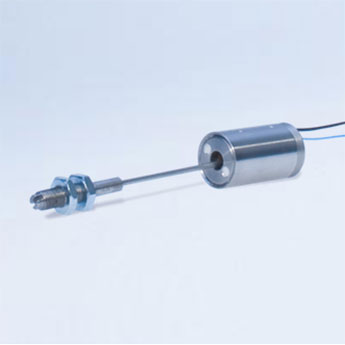Displacement Sensor - Displacement Transducer Product Overview
Displacement transducers and displacement sensors from HBM ensure reliable measurement results in many areas of research, development and production. Almost all of our displacement transducers work according to the extremely reliable inductive measurement principle. They are easy to use and rugged, can achieve high precision, and feature minimum wear.
Selected: no filter
Your selection returned 6 results.
How Does an Inductive Displacement Sensor Work?
An inductive displacement sensor functions according to the principle of inductance. However, the following questions still need answering: What exactly is it? What is behind it? How is it technically implemented? What are its advantages?
Inductive working principle
Going back to the basis of the principle of action, it can be stated as follows:
A metallic core is moved in the vicinity of a coil through which alternating currents flow, thereby causing a change in the impedance and the alternating current resistance of the coil within this coil. This change can be measured and amplified with skillful wiring (see Wheatstone Bridge Circuit, explained briefly). Thus, a change in displacement can be represented in an electrical signal.
There are different approaches to the technical implementation. Most displacement transducers at HBM are designed as active quarter bridges or half bridges, which, then, are internally supplemented to form half or full bridges. Strictly speaking, this means that only one or two parts of the bridge circuit are coils, while the other parts are represented by resistors.
In order to optimize linearity and temperature behavior, special methods are employed to wind the coil and create the magnetic core.
Advantages of Inductive Displacement Measurement Technology
As there is no contact between core and coil due to the principle, the inductive measuring principle should be regarded as wear free. It is, of course, ideal for service life and maintenance costs. Depending on the version, only the linear guide touches the probe rod with a guide. However, the guide can be designed very well and can, hence, be used for many years without any problems.
Furthermore, a special feature of the inductive measuring principle is the quasi infinite resolution as, in contrast to other principles, it only has a coupling through a magnetic flux. The limitation lies in the technology of the amplifier used. However, with modern measurement technology and high-quality products, resolutions in the micrometer range can be achieved.
Moreover, a third and often significant advantage of this principle is the special quarter- or half-bridge design. In contrast to Linear Variable Differential Transformers (LVDT), HBM displacement transducers have fewer coils and, therefore, require less installation space.
Displacement Sensor Product Range from HBM
After the explaining the function and advantages of HBM, the question of how to implement them still remains. At HBM, the inductive displacement sensors can be divided into three series:
